An Introduction to Mexican Chiles
No ingredient is more fundamental to Mexican food than the colorful chile (sometimes spelled “chili”). Chiles are a versatile fruit that come in a wide variety of shapes, colors, sizes, and “heat.” They can be prepared in myriad ways: roasted, fried, boiled, grilled, and fresh. In this blog post I share some of my favorite chile pepper types and their best uses.
Fresh vs. Dried Chiles
First off, let’s dive into the super interesting world of chile names. Did you know that a chipòtle chile is actually just a dried jalapeño? Or that the dried up sister of an Anaheim is Chile Colorado? Well guess what? Those aren’t the only ones!
Check out this awesome infographic I found from eljornalero.com.mx that shows many different types of chiles:
How cool is it that for each of my favorite Mexican chile peppers, there are actually two completely different types of flavor profiles and names based on whether they are fresh or dried? Depending on whether the pepper is fresh or dried can vastly change the flavor of the chile, and therefore its application in the kitchen.
I’m going to go through and tell you all about my favorite chiles and how best to use them, but first you need to understand how the Scoville Scale works.
Understanding the Scoville Scale
The Scoville Scale was created by Wilbur Scoville in 1912 as a way of measuring the relative spiciness or “heat” of different types of chilis. Measured in Scoville Heat Units (SHUs), the Scoville Scale analyzes the prevalence or concentration of capsaicin, among other compounds.
Capsaicin is the primary chemical compound that is responsible for a chili’s heat. The highest concentrations of capsaicin are found in the membranes and seeds of chili peppers, which is why I always recommend that you remove them if you are sensitive to spicy foods.
While SHUs are an imperfect measurement due to its subjective manner of testing and the environmental variations that can affect capsaicin development over the course of a pepper’s life, it’s a useful tool in assessing how spicy you can expect a particular type of chili to be.
The Scoville Scale is still a widely accepted way of determining where a chili pepper falls in the range of “this is sweet and not spicy at all” to “help me, my face is melting!” Below, I’ll list some of my favorite Mexican chiles, where they fall on the Scoville Scale, and their best uses.
My Favorite Mexican Chiles, Ranked by Scoville Scale
Ancho (Mild to Medium)
“Ancho” is Spanish for “wide.” The ancho chile is the sweetest and mildest of all dried Mexican chile pepper types. Large and triangular in shape this is the dried version of the poblano chile and the most common dried pepper in Mexico.
Ancho chiles usually have an SHU of 1,000-2,000, so I’d rate them as mild with a little kick. Here are some of my favorite recipes using this type of pepper:
Poblano (Mild to Medium)
This heart-shaped chile—wider and darker than an Anaheim—is also mild. It has a wide interior, which makes it the perfect chile for stuffing.
While Poblanos and Pasillas can range from 1,000-2,500 SHUs, remember that the spiciest among them will be on par with the least spicy jalapeños. Here are some of my favorite recipes using this type of pepper:
Anaheim or Hatch Chiles (Mild to Medium)
Anaheim chiles are perfect for recipes calling for roasted chiles to make salsas or stuffed peppers. They have a rough SHU score of 2,500-8,000 depending on the variety. Here are some of my favorite recipes using this type of pepper:
Dried Red Chile Colorado (Mild to Medium)
Dried Anaheim chiles are also referred to as chile colorado, New Mexico chile, or California chile. This chile type has a thin flesh with an earthy chile flavor and undertones of wild cherries. This is the chile I use to make Red Chile Sauce.
Similar to their fresh counterparts, they have an SHU rating of 2,500-8,000. Here are some of my favorite recipes using this type of pepper:
Pasilla (Medium)
The word “pasilla” comes from the word “pasa” which means “little black raisin.” This thin-fleshed chile has a berry flavor with aromatic overtones. Depending on the chile type, you can expect a SHU between 250 (very mild) to 4,000 (a bit hotter than a mild jalapeño). Try this recipe using this pepper:
Chile Güero (Medium)
These chiles are called güeros (blondies) in Mexico because of their yellow color. They’re perfect to add some color to your favorite salsa!
Chiles Güeros have an SHU of 5,000-8,000, similar to a jalapeño. While they have a mild chile flavor, roasting them brings out a richer taste.
Try this recipe using this pepper:
Jalapeño (Medium to Hot)
Jalapeños have the richest flavor of all the small chiles, which makes them perfect for salsas. They have a perfectly edible heat, landing between 2,500 and 8,000 SHUs. Here are some of my favorite recipes using this type of pepper:
Chipotle Peppers in Adobo Sauce (Medium to Hot)
This is actually a dried, smoked, red jalapeño. I use the canned chipotle peppers in adobo sauce, which are marinated in vinegar and seasonings. You can eat this type of pepper straight from the can (not literally), chop them up as a garnish, or cook them with your favorite meal.
At an SHU level of between 2,500-8,000, chipotles are hot, but not crazy. Here are some of my favorite recipes using chipotle peppers in adobo sauce.
Serrano (Hot)
The flavor of serrano chiles is bright and biting with a delayed fuse. These small, skinny, pointy chiles are about five times hotter than jalapeños, clocking in at 10,000-23,000 SHUs. Here are some of my favorite recipes using this type of pepper:
Chile de Arbol (Hot)
The name of this chile is Spanish for “tree,” which is exactly what these slender, tapered chiles resemble. Chile de arbol peppers are thin-fleshed and have a tannic, smoky, and grassy flavor.
I’d rate chiles des arbols as searing hot in the range of about 15,000-30,000 SHUs. For your reference, that’s about 6 times hotter than a jalapeño! Here are some of my favorite recipes using this type of pepper:
Conclusion
No matter how you slice them, chiles of all types are an essential part of Mexican cuisine. And as you can see from the blog post, there’s a little something for everyone!
If you’ve been hesitant to try some of my recipes because you think they might be too spicy, just do a quick check for the SHUs on a pepper you can handle and substitute accordingly.
TIP: Whenever you’re trying something spicy, keep some sour cream, cheese, milk or even ice cream nearby! Just make sure you’re not messing with any non-fat stuff. Why, you ask? First, capsaicin is fat soluble, so full fat dairy can help to wash it away. Secondly, dairy contains a compound known as casein which actually breaks the capsaicin molecule and prevents it from entering your taste receptors. Neat, right?
Pin this for later so you always know the right type of chile pepper to use!
 Muy Bueno: Fiestas
Muy Bueno: Fiestas 
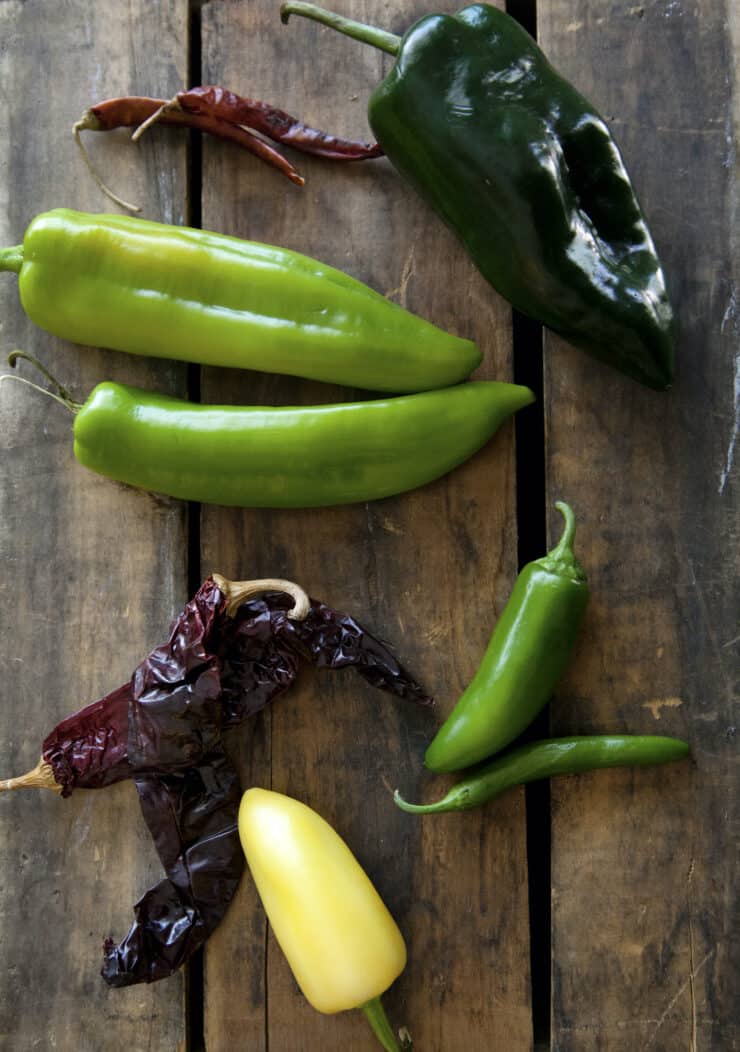
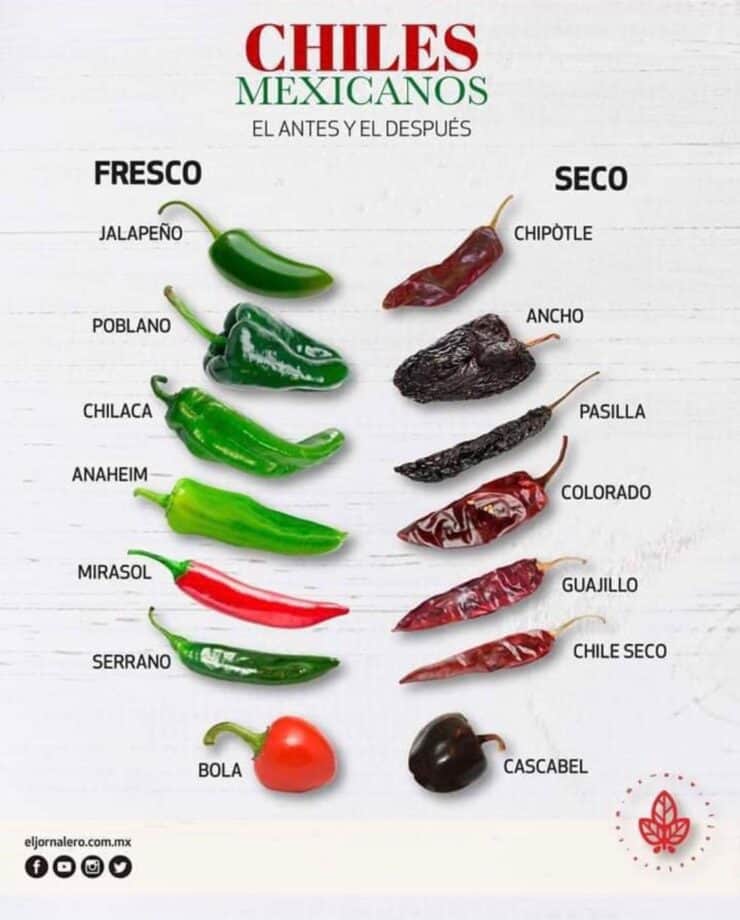
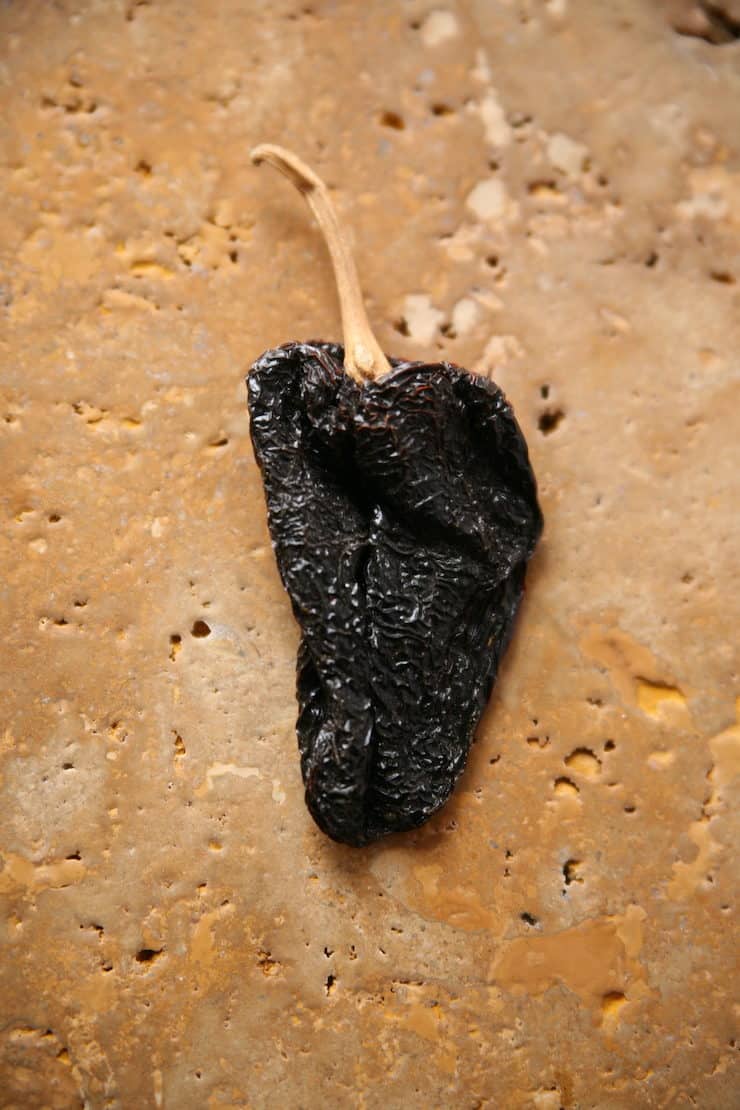
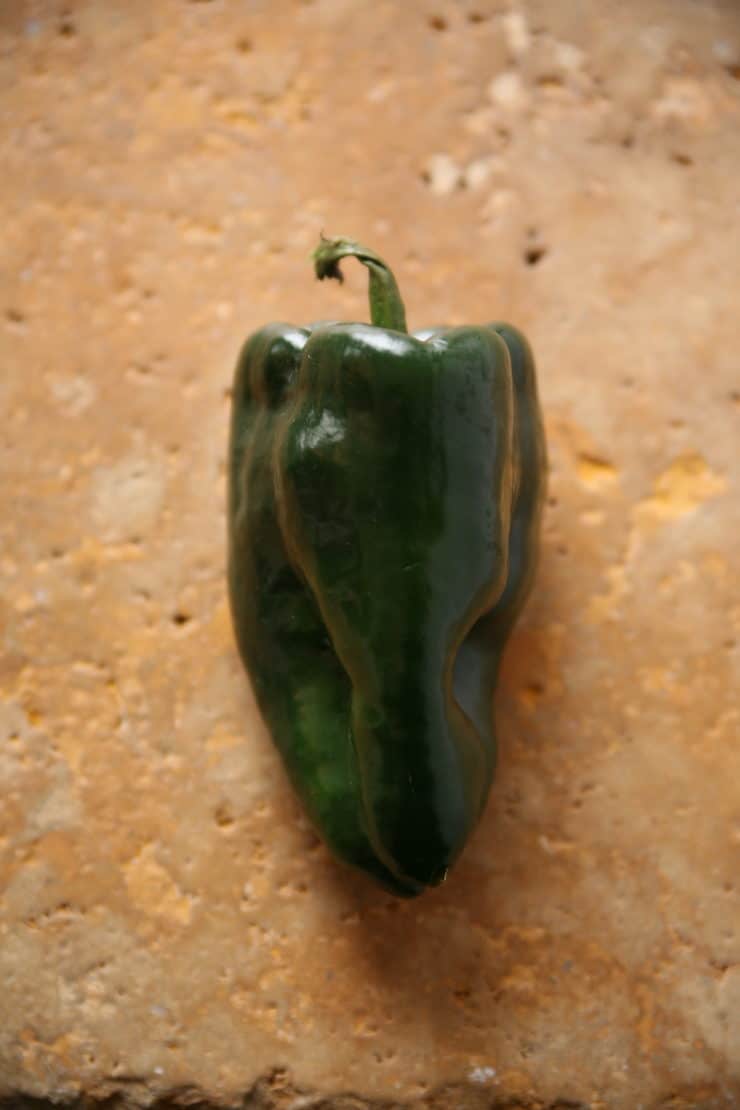
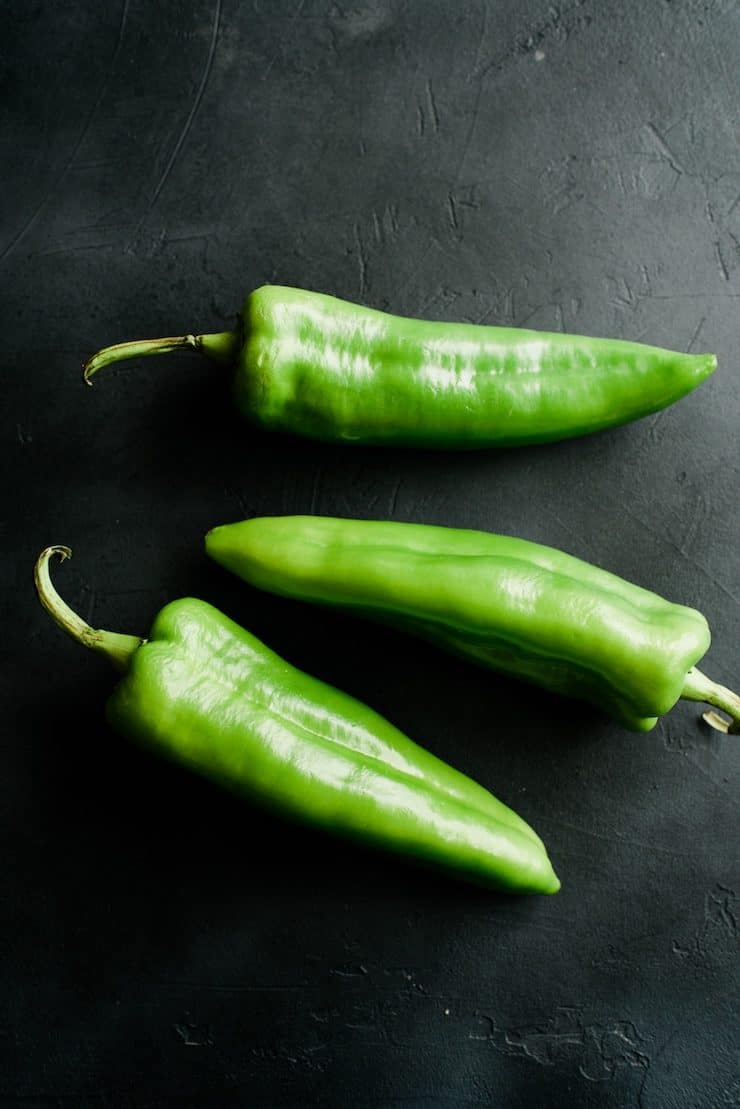
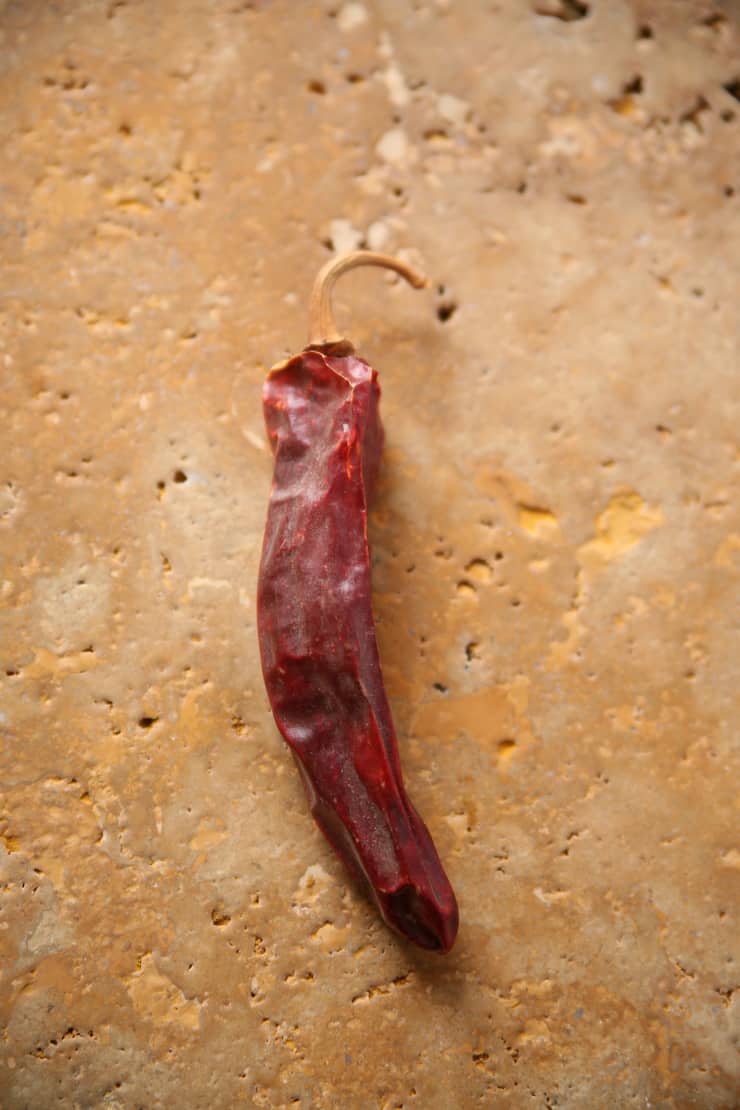
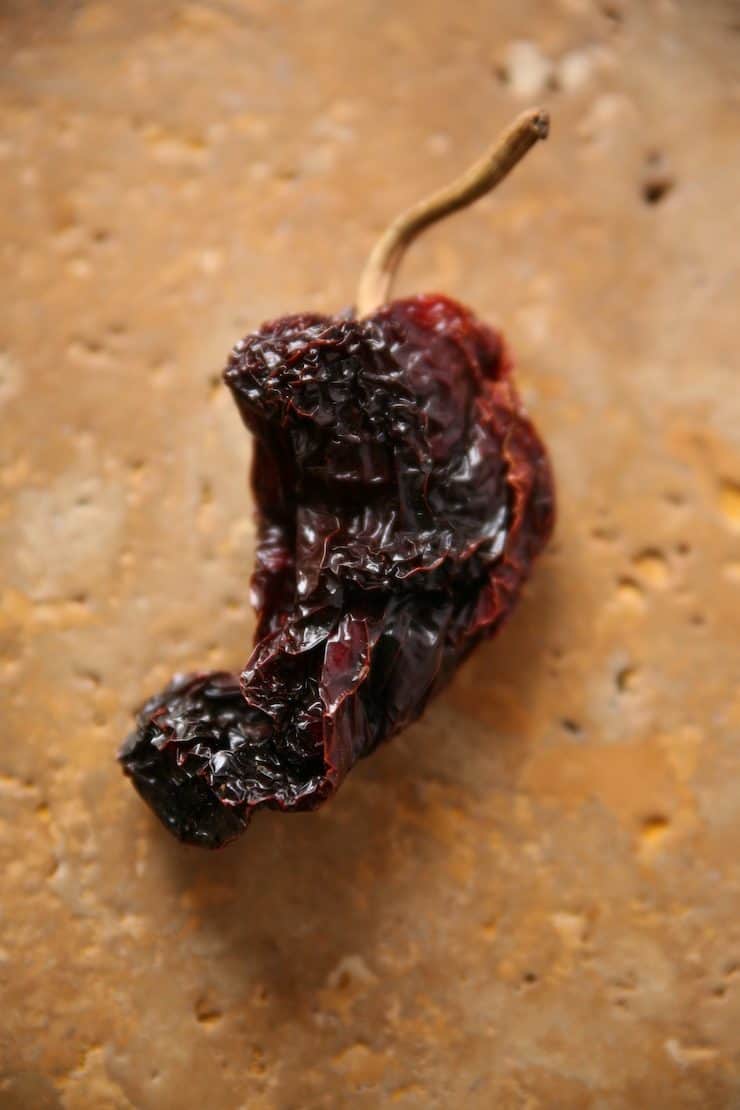
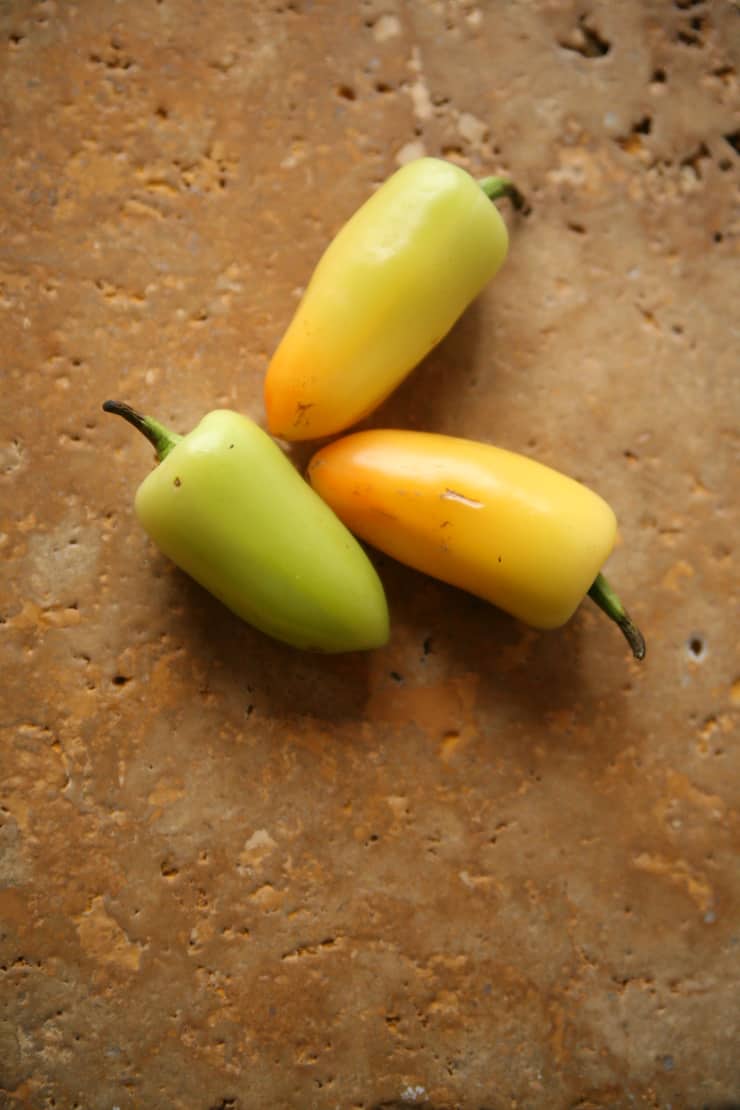
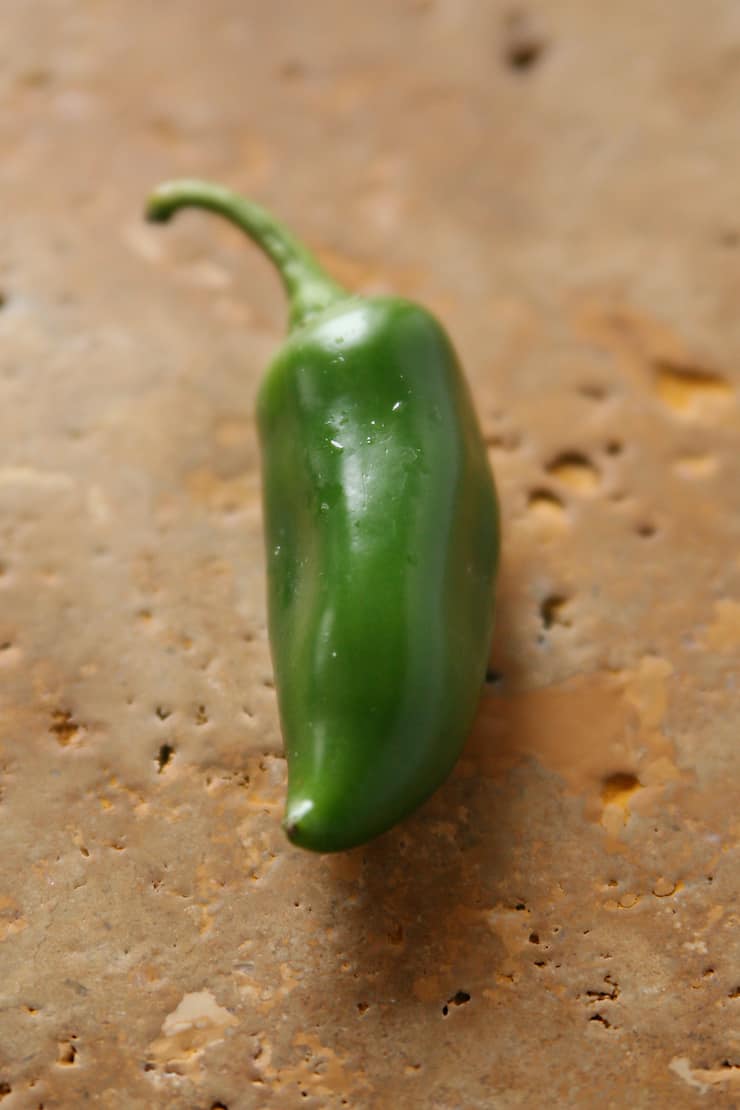
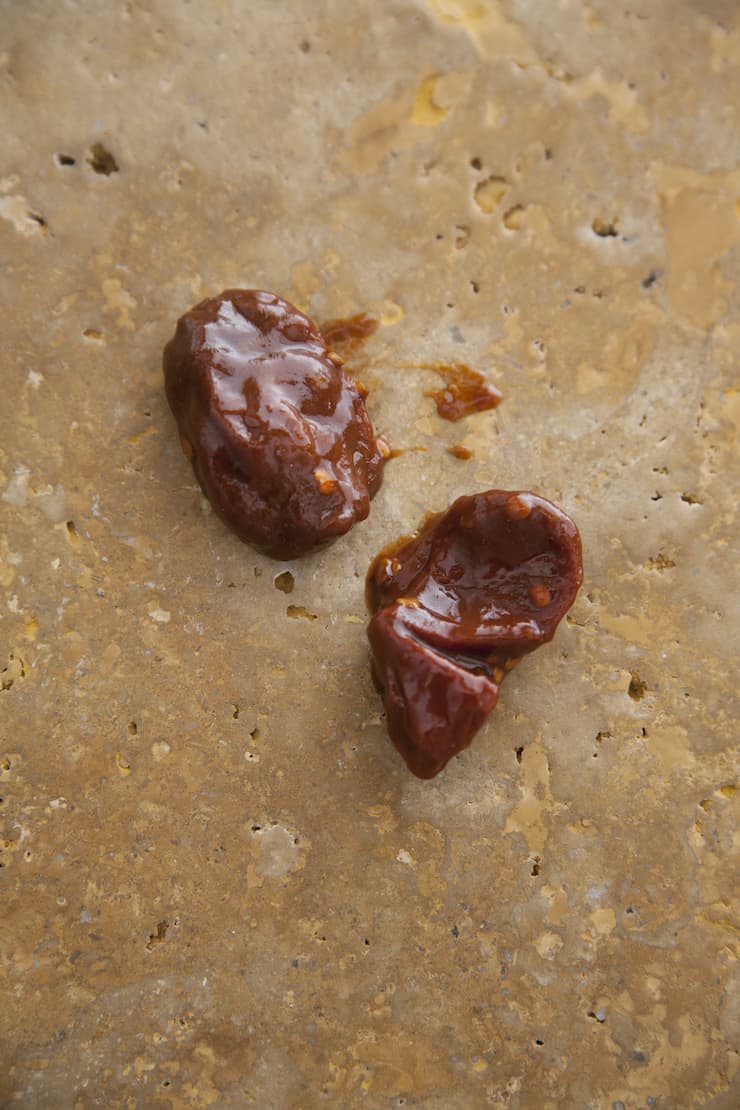
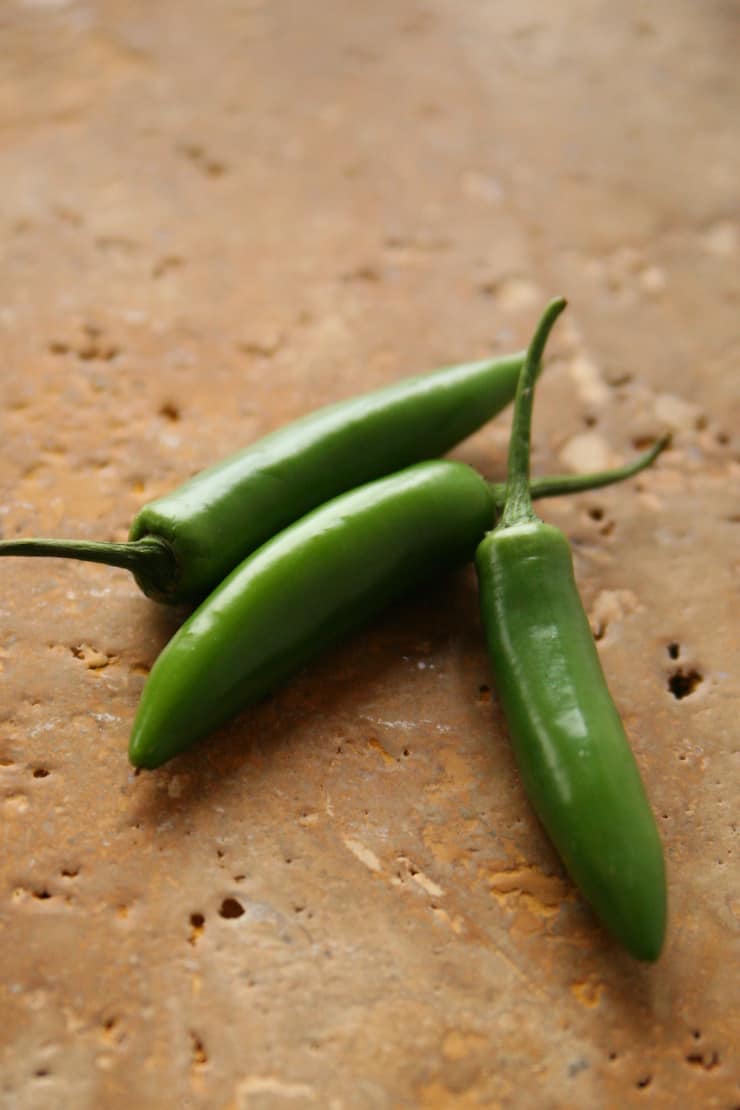
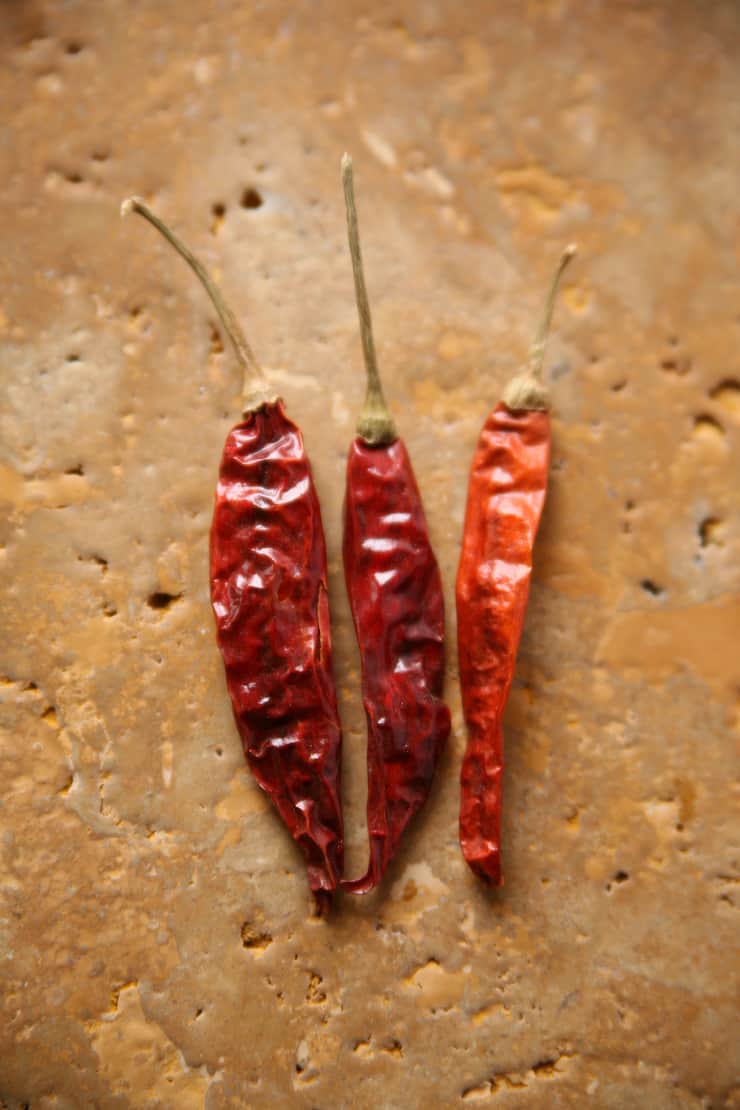


13 Comments on “An Introduction to Mexican Chiles”
Was surprised by the absence of the Hatch Chile on your illustration, being from New Mexico. Can you advise where it falls on the chart?
Hatch chile peppers are a generic name for New Mexican peppers that are grown and harvested in the Hatch Valley region, New Mexico. Hatch Chile peppers are earthy in flavor, similar to the Anaheim chili pepper.
First time I have seen a good explanation of peppers. When shopping for some one day in HEB I asked two different Mexican ladies to point out the pepper required for the recipe I had found, the name escapes me now, neither could which surprised me. I had just been reading one of your recipes which required roasted green peppers, which once again confused me until farther down the page I found your introduction to peppers, a name is better than a color, thank you.
Chile Colorado is not anaheim s. Chile Colorado are ripened hatch green chile from Hatch NM. And they are hot asf. Pinch Texans no save nada de los chiles. Colo los chipotles y los guajillos lmao
Not all of the Hatch chilis are super spicy. They range in heat, but I feel like Anaheim and hatch, while they appear similar, their flavor profile is totally different. The thickness of the skin is much different, the pattern of the veins and seeds differs. I can see how they are related but not the same at all, at least not to me!
I really loved this article. Very practical and I especially liked the connection to your recipes. I have 116 recipes for salsas and hot sauce that I put in bottles! Although I’ve aways wondered, do Mexicans make a distinction between hot sauce (in bottles) and salsas or are they all just considered salsas? Let’s not forget the dangerously super hot habanero. Buttery. Hint of smoke. I make a salsa with it, then freeze it in mini-ice cube trays, and add a mini-cube to soups. Thanks for your website and work!
My favorite is the chile pequin. A friend once told me “only use one pequin per tomatoe as they are hot”.
I loved the way you have written and also the pictures are also yummy and great.. When you come to my blog I will share a discount coupon for you for this lovely post 🙂
Such an interesting post.
I looove chilli. Mild hot in meal or dried or fresh.
I cook with it on daily basis.
Yum yum
http://potsofsmiles.blogspot.co.uk/
xxxx
Hola Yvette! I really enjoy your blogs. I wonder if you can help me. When I was a young girl, I remember my mom and Nana making a thin, crepe like egg dish. I don’t recall any of the ingredients except for dried ground shrimp, the scrambled eggs and a red enchilada type sauce. Do you have any idea how to make these or the actual ingredients? Popular during Lent. Mucha gracias!!!!!
Hi Christina, sounds delicious! I wish I knew what it was, but have no idea.
It’s called camarones con noples en Chile rojo. In English dried shrimp with cactus in red sauce. Yes it’s made during Lent. You said the ingredients, bet the eggs and add shrimp drop a spoon full into hot oil and cook. Make your enchilada sauce add your cook shrimp patties into sause and cooked cactus. Delish!*
Love this! My boyfriend’s mum always uses a variety of chiles & I never know which ones! This covers some of the bases. She also uses a super tiny chile that comes in red & green. :]